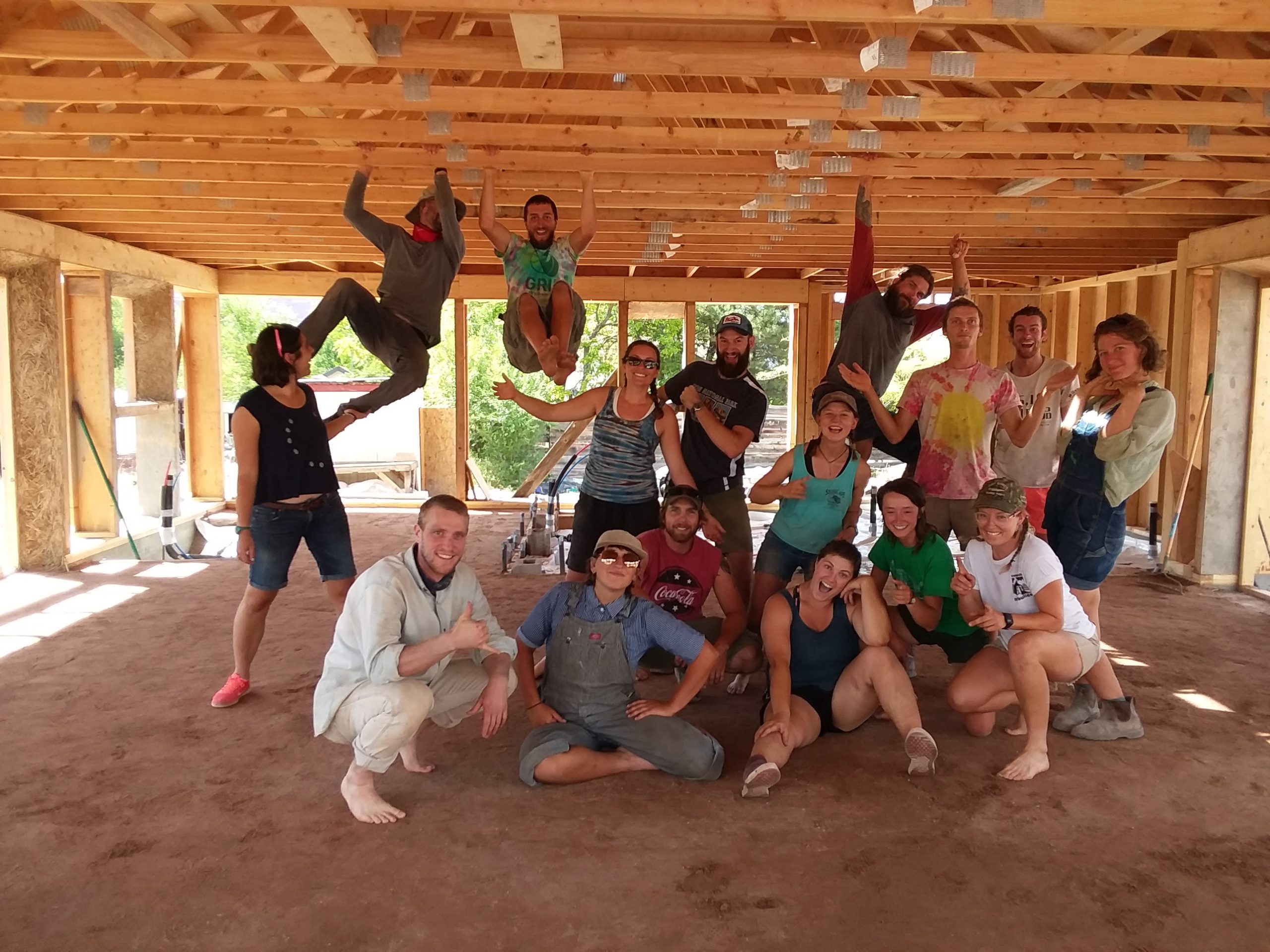Some information may be outdated.
Community Rebuilds built its first house in Moab in 2010. Nine years and dozens of homes later, the local construction nonprofit organization has decided to push the envelope even further for its builds.
Enter the Living Building Challenge.
The Living Building Challenge, created by the nonprofit International Living Future Institute (ILFI), is an ambitious sustainable building certification program. The certification is “often described as the world’s ‘most rigorous’ green building standard,” according to the Institute.
“It’s built on the principle of regenerative design,” Community Rebuilds Construction Supervisor Alex Burbidge said.
“We’re trying to make our houses net-neutral as far as energy consumption, the waste we’re generating in the building process, and even the materials we’re using” he said.
While sustainable design has always been a part of Community Rebuilds’ values, the Living Building Challenge represents an “attempt to raise the bar for building standards from just doing less harm to contributing positively to the environment,” according to ILFI materials.
On Aug. 24, Community Rebuilds held a “stomp party” at the new builds at the corner of Mill Creek Drive and Sand Flats Road.
This property is the future residence of two families and their separate straw-bale houses, built adhering as closely as possible to the Living Building Challenge requirements.
Interns, community members, and the future homeowners tamped down the dirt foundation for these two homes with dancing feet and heavy tools.
Community Rebuilds says it strives to use healthy, natural materials that have no negative impact on the home residents or the environment. Traditional home builds can incorporate numerous toxic or carcinogenic materials.
The Living Building Challenge emphasizes sourcing healthy local building materials and reusing materials rather than sending them to the landfill.
“An example of a material we want to replace is OSB [a common type of engineered wood board], because it contains toxic gasses such as formaldehyde,” Burbidge said.
Fortunately, “a lot of materials have been vetted to find appropriate building materials that aren’t toxic,” Burbidge said. “A lot of alternatives exist.”
For the last few months, Community Rebuilds interns have been painstakingly deconstructing the old building that was on the property in order to salvage building materials to build the two new homes planned.
Didar Charles and her family will own one of these two houses. An engineering associate for the City of Moab, Charles is deeply involved in the construction of her future home and labors alongside the interns for hours every week.
“My family and I are so lucky to have a home in Moab, and especially a special home like this one.” Charles said. She explained how she has learned about environmentally-friendly building techniques.
“We use coffee, vinegar and steel wool to stain the wood,” Charles said, “Then we put linseed oil over it and get beautiful color.”
These two homes will also contain composting toilets, addressing Living Building Challenge guidelines that require projects conserve water resources.
“We have the first permit in the state for composting toilets,” Burbidge said, “which is monumental as far as changing state codes and allowing different alternatives for processing our waste.”
“Rainwater from the roof, stored in water tanks, will run the composting toilets,” he said, an important innovation in a drought-prone region. The water in these cisterns will also supplement landscape irrigation.
Interns come from all over the country to learn these building techniques.
“I found out about Community Rebuilds from two friends who had done the five-month internship here in Moab,” said Reid Saunders, who is from Virginia. She has been the Community Rebuilds Planning and Development VISTA Coordinator for the past year.
“I have a degree in urban planning,” she said, “so when I looked into working with (Community Rebuilds), I found out about the planning and development VISTA position. It perfectly matched my interest in housing and sustainable building.”
“What I really love about Community Rebuilds is that sometimes environmentalism can feel really doom and gloom,” said Kate Weigel, a Community Rebuilds construction intern, “but here, practicing environmentalism feels like a celebration.”
For more information on Community Rebuilds and the Living Building Challenge, follow along at www.facebook.com/communityrebuilds
For more information on Community Rebuilds and the Living Building Challenge, follow along at www.facebook.com/communityrebuilds
Appreciate the coverage? Help keep local news alive.
Chip in to support the Moab Sun News.





